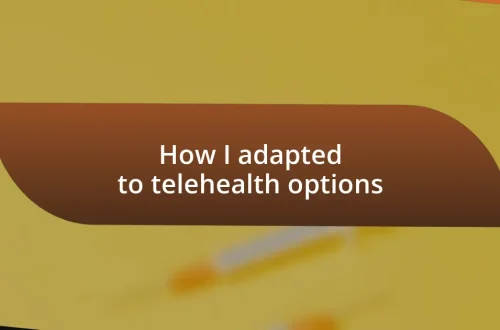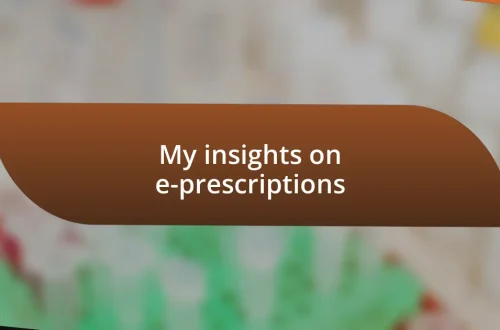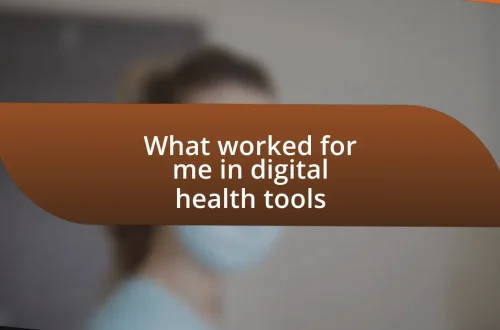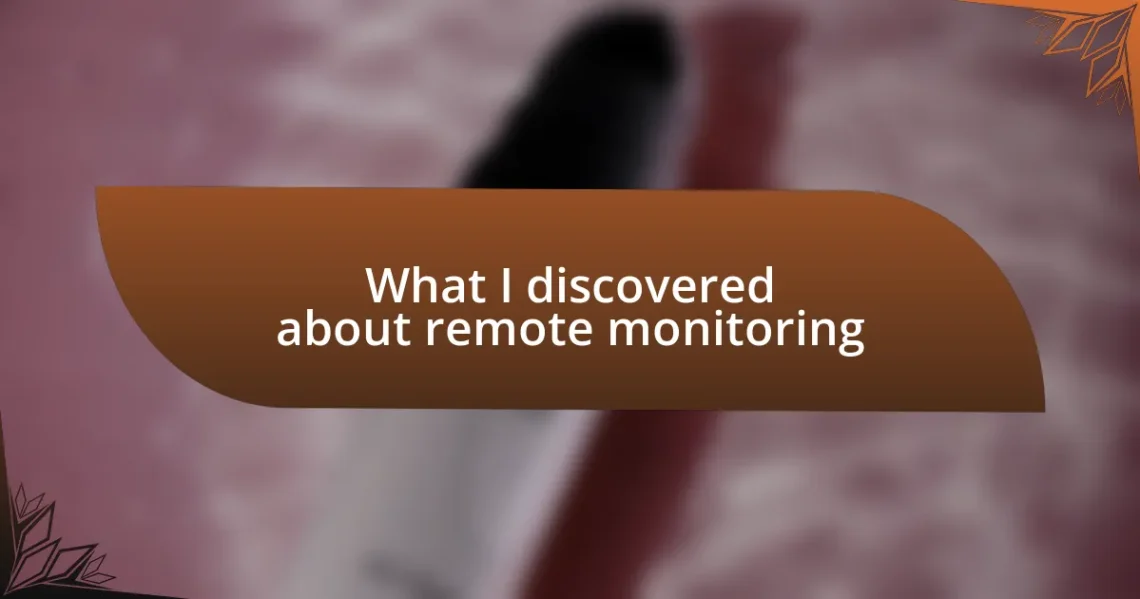
What I discovered about remote monitoring
Key takeaways:
- Remote monitoring provides peace of mind through real-time alerts and data, enabling improved decision-making and emergency response.
- Key technologies include IoT, wearable devices, and cloud computing, which create a comprehensive monitoring ecosystem.
- Challenges involve data privacy, technology reliability, and maintaining user engagement, highlighting the need for ongoing support and security measures.
- Real-world applications span health management, agriculture, and home security, demonstrating the versatility and effectiveness of remote monitoring systems.
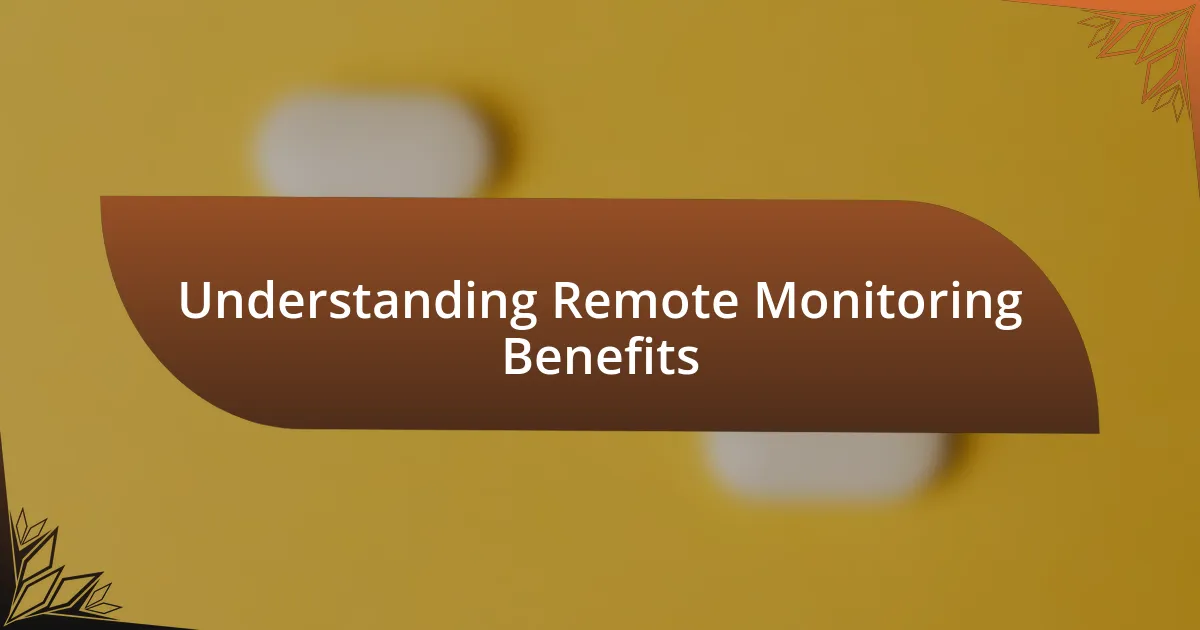
Understanding Remote Monitoring Benefits
One of the most compelling benefits of remote monitoring is the peace of mind it brings. I remember when I set up a monitoring system for my elderly parents. The ability to check in on their well-being without invading their space gave me a sense of security that was invaluable. How often do we worry about our loved ones when we cannot be physically present?
Additionally, remote monitoring offers real-time alerts, which can be a game changer in emergencies. I still recall the moment I received a notification about a temperature spike in my home while I was away. It prompted me to act quickly, preventing potential damage and making me appreciate how timely information can safeguard our environments. Isn’t it reassuring to know that technology can give us that immediate awareness?
Lastly, the data collected through remote monitoring can lead to better decision-making. For instance, when I analyzed my energy consumption patterns, I could pinpoint areas for improvement, ultimately saving money on my utility bills. Isn’t it fascinating how understanding the data can empower us and encourage more efficient lifestyles?
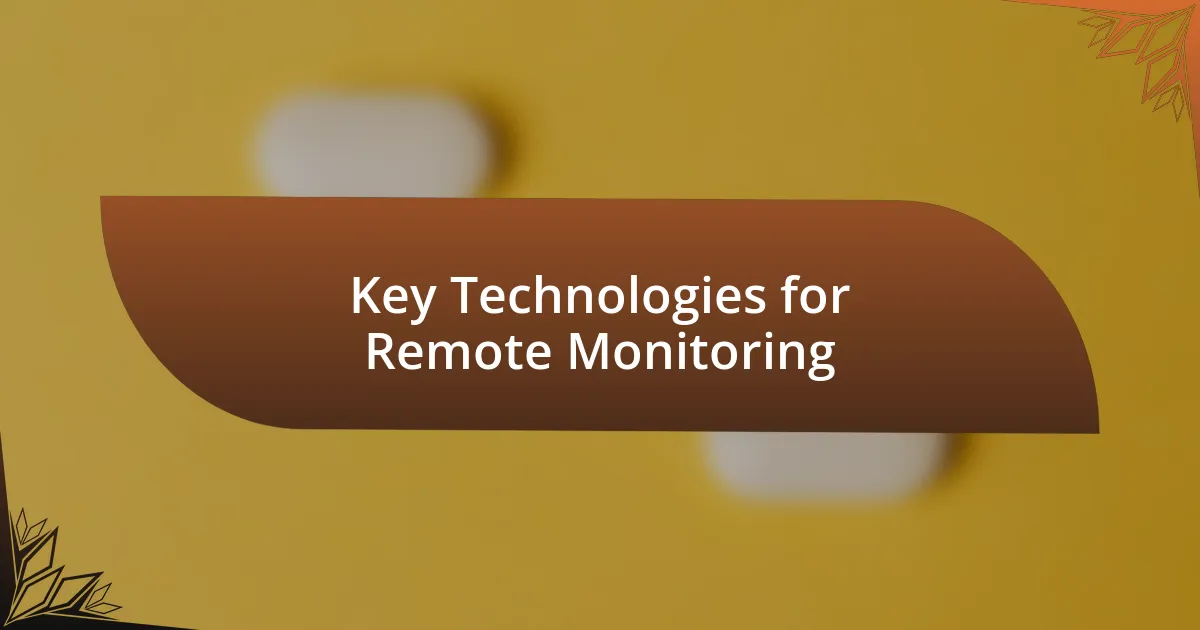
Key Technologies for Remote Monitoring
Key Technologies for Remote Monitoring
In my experience, several key technologies play crucial roles in enabling effective remote monitoring. For instance, sensor networks are essential; they provide real-time data on environmental conditions, health metrics, or system performance. When I first implemented smart sensors in my home, I was amazed at the level of detail I could receive about my energy use, down to the individual devices. This insight wasn’t just informative; it became a conversation starter with friends about energy efficiency.
- Internet of Things (IoT): Connects devices for seamless data sharing.
- Wearable Technology: Monitors health metrics like heart rate and activity levels.
- Drones: Conducts remote inspections and surveys in difficult-to-access areas.
- Mobile Apps: Provides user-friendly interfaces to access monitoring systems from anywhere.
- Cloud Computing: Stores vast amounts of data securely, making it easily accessible for analysis.
The integration of these technologies has transformed how I engage with my environment. For example, using wearable technology changed my perspective on my fitness; I could see my heart rate in real-time during workouts. This not only helped me push my limits but also reassured me about my health in a tangible way. Each technology has its own strengths, but combined, they create a comprehensive monitoring ecosystem that I genuinely find invaluable.
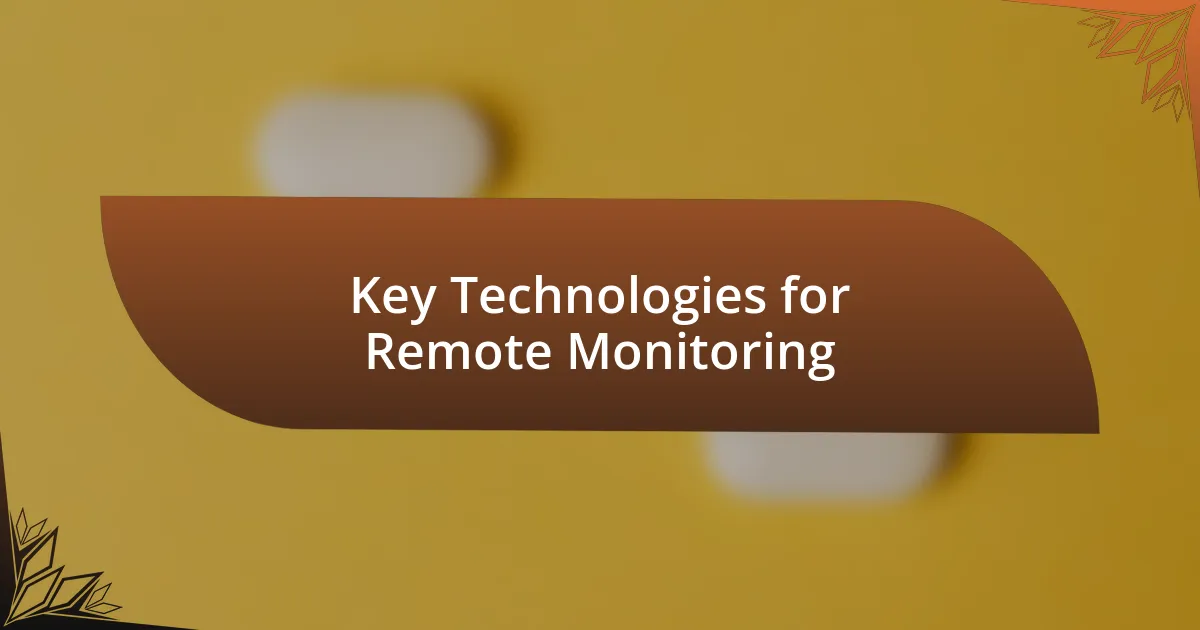
Common Challenges in Remote Monitoring
Remote monitoring certainly presents its own set of challenges. One notable issue I’ve encountered is data privacy and security concerns. When I first set up my home monitoring system, I was surprised by how vulnerable data could be—and I realized how crucial it is to implement strong security measures to protect sensitive information. This was a wake-up call for me, as I had previously assumed that technology alone would safeguard my personal data.
Another challenge I’ve faced is the reliability of the technology itself. For instance, I once experienced a glitch in my system that caused delays in receiving important health updates. That moment was both frustrating and concerning, as timely information is critical, especially when it comes to health monitoring. I learned that while innovative technologies are incredibly helpful, they are not infallible, and having backup systems in place is essential.
Lastly, keeping users engaged and informed is often a battle. I recall a time when I introduced a health tracking app to my parents. They initially loved the idea, but over time, they lost interest. This experience taught me that simply providing access to monitoring tools isn’t enough; continuous support and motivation are equally important to ensure users remain invested and benefit from the monitoring process.
| Challenge | Description |
|---|---|
| Data Privacy and Security | Concerns about unauthorized access to sensitive information. |
| Technology Reliability | Gaps in technology that may lead to delays in important updates. |
| User Engagement | The need for ongoing support to keep users interested in monitoring. |
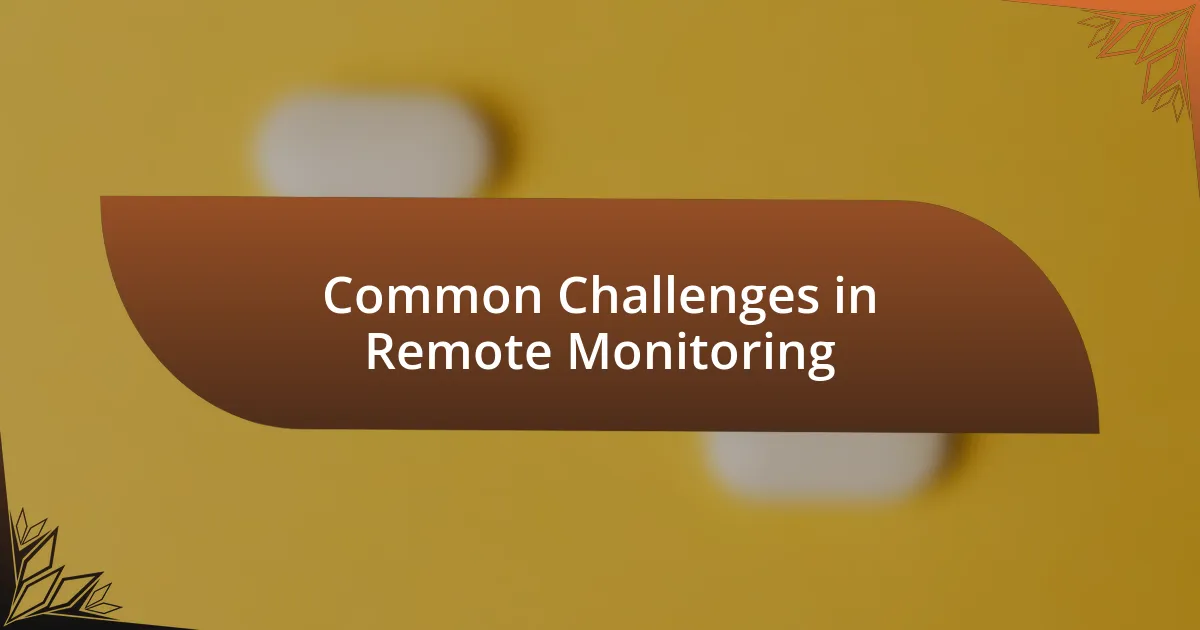
Real-World Applications of Remote Monitoring
Remote monitoring has transformed how we manage health and wellness, particularly for individuals with chronic conditions. I remember helping a close friend who was dealing with diabetes set up a glucose monitoring system. It was astonishing to see how real-time data enabled him to make informed decisions about his diet and exercise. This system truly empowered him to take control of his health in a way that was previously challenging.
Another intriguing application I’ve encountered is in agriculture. I worked with a local farmer who implemented remote soil moisture sensors. The results were eye-opening—he could precisely monitor irrigation needs, which not only saved water but also significantly improved crop yields. Witnessing those changes firsthand got me thinking: what more could be achieved if more farmers embraced this technology?
In the realm of home security, remote monitoring has offered peace of mind that I never appreciated until I installed outdoor cameras. One night, I received an alert for unusual movement in my backyard. Watching the live feed made me feel secure, allowing me to assess the situation without stepping outside. This experience highlighted how remote monitoring can act as not just a tool, but also a comforting presence in our daily lives.
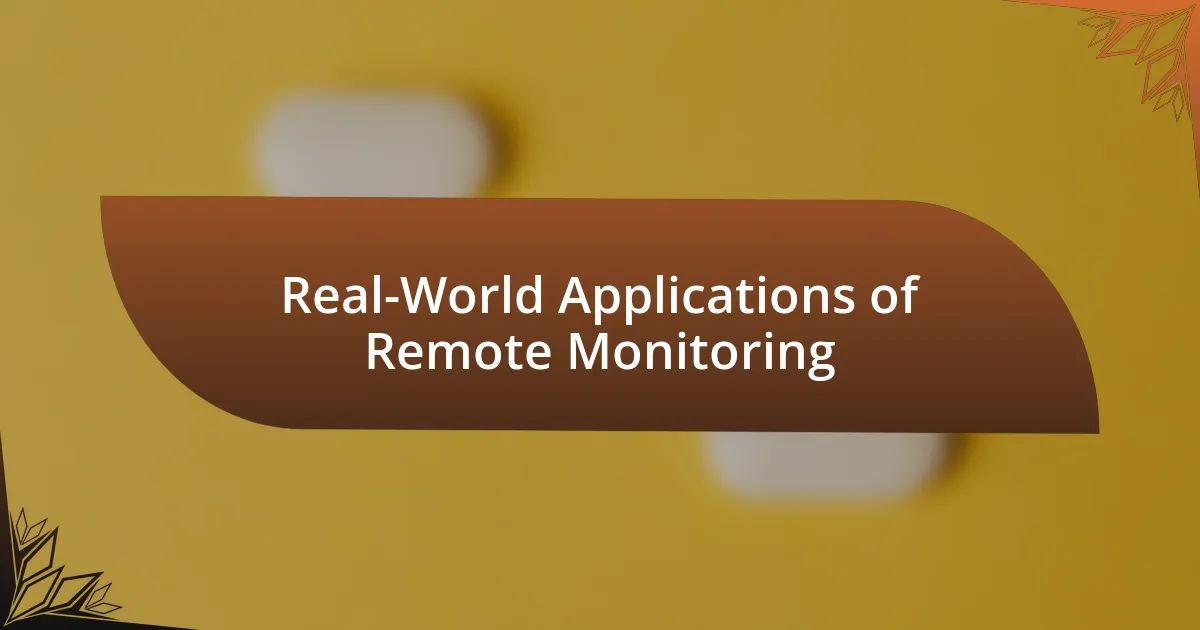
Comparing Remote Monitoring Tools
When comparing remote monitoring tools, I find it essential to consider user-friendliness. For instance, I’ve explored different health platforms, and I noticed that some were incredibly intuitive, allowing easy navigation for users of all tech levels. On the other hand, I encountered a highly specialized system designed for medical professionals, which was rich in data but overly complex for everyday users. This made me wonder: how do we balance advanced features with accessibility?
Performance metrics can also differ vastly among remote monitoring tools. I once used a fitness tracker that promised continuous heart rate monitoring. Initially, I was impressed, but over time, I began to notice discrepancies in the readings, especially during workouts. This inconsistency made me realize the importance of accuracy and reliability in selecting these tools. Have you ever felt frustrated by a device that didn’t deliver as promised?
Finally, integration capabilities matter greatly when evaluating remote monitoring options. I remember attempting to sync a particular tool with my smartphone and smart home devices, only to face endless compatibility issues. It was eye-opening to understand that effective integration not only enhances functionality but also improves my overall experience. Isn’t it fascinating how a seamless connection can make such a difference in managing our health and safety?


